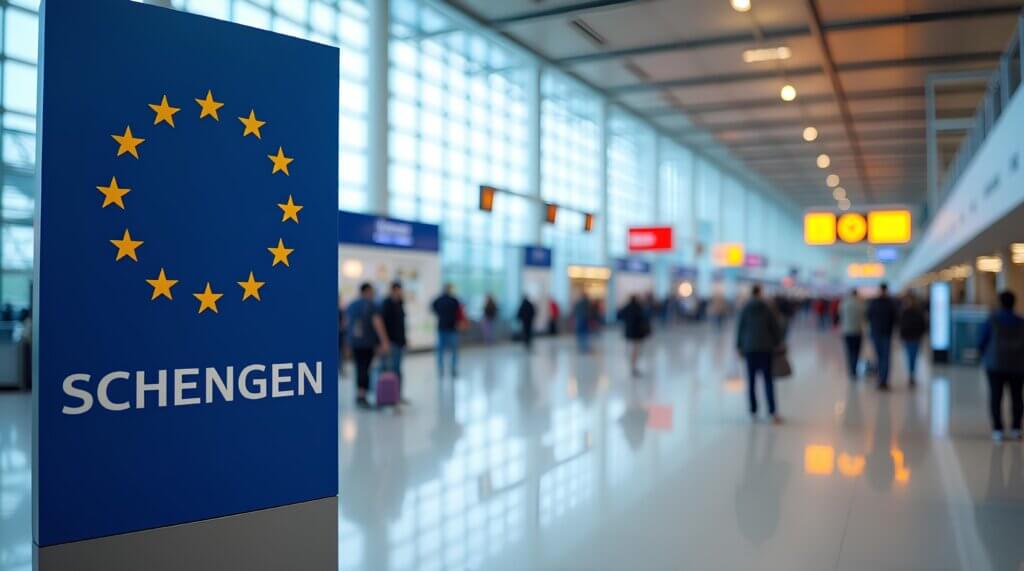Here’s a guide for the business traveller on the new border-control systems you need to know: ETA (UK), ETIAS (EU), and EES (EU). These changes will affect how you cross borders, how much time you need for immigration, and how you’ll plan your travel in Europe.
Why are things changing?
Governments are increasingly using digital checks and biometrics to improve security, combat overstays and illegal migration, and streamline border control processes. For travellers, that means more pre-screening, biometric data collection, and automated systems – but also more planning and awareness of new rules.
What is ETA (UK)?
ETA stands for Electronic Travel Authorisation – the UK’s new system for pre-screening travellers before they enter.
- The ETA is an online application that travellers from visa-waiver or visa-exempt countries need to complete before travelling to the UK
- It’s valid for multiple entries over 2 years (or until your passport expires)
- The application involves submitting passport details and other information, which is checked against security databases
- Having an ETA does not guarantee entry – border officers can still refuse entry based on other factors
For business travellers, that means: you must apply in advance (not at the border), and make sure your ETA is in place before booking or boarding your flight/train.

What is EES (EU Entry/Exit System)?
EES is the new EU system for recording entries and exits of non-EU travellers using biometric data. It replaces traditional passport stamping for short-stay visits (e.g. tourism, business) to the Schengen area1.
Key points:
- Launch date: 12 October 2025 (phased rollout over 6 months)
- Full operation: expected by 10 April 2026
- What data is collected: your passport details, facial image, and fingerprints (for those aged 12 and above)
- Who it applies to: travellers from outside the EU / Schengen area (e.g. UK citizens) making short stays (up to 90 days in a 180-day period)2
- Exemptions / special cases:
• Children under 12 do not need to provide fingerprints (but a facial image is still taken)
• Long-stay visa holders or those with residence permits in EU may be exempt3
• Certain countries, e.g. Ireland and Cyprus, are not in Schengen – EES doesn’t apply there
What changes for travellers:
- No more stamping of passports on entry and exit; instead, your movements (entry/exit) are recorded electronically
- On your first arrival under EES, you’ll have to visit a biometric registration kiosk / booth to have your photo and fingerprints taken4
- Subsequent visits will use automated checks (matching your live biometrics to the stored data)
- Expect some delays at border control, especially during the rollout period
- Because EES tracks entries and exits, overstaying the 90-day limit becomes easier to detect
For business travellers, this means your first trip under the new regime may take a little longer at the border, especially for biometric registration – plan for buffer time. It also underscores the importance of staying within your permitted stay limits and knowing your entry/exit history.
What is ETIAS (European Travel Information & Authorisation System)?
ETIAS is a future EU pre-travel authorisation scheme – somewhat akin to the U.S. ESTA system – for travellers from visa-exempt countries (like the UK) entering the Schengen area.
Key features:
- Timing: ETIAS is expected to launch in the last quarter of 2026
- Fee: €20 (for travellers aged 18 to 70) – free for certain categories (e.g. children, older travellers)
- Validity: Valid for three years or until the passport expires (whichever is sooner)
- Who needs it: Any visa-exempt traveller (i.e. someone from a country that doesn’t require a visa) to enter Schengen / EU (excluding Ireland)
- Application: Online, providing personal/travel/security information. Most applications should be approved quickly, but some may need further review
- Transitional periods: After launch, there will be phases where ETIAS is accepted but not strictly required, and a grace period before full enforcement
Important: ETIAS is not yet active – you don’t need one (for now)5.
For business travellers, once ETIAS is active:
- You’ll need to get approval before travelling, not at the border
- Mistakes or delays in your ETIAS application could affect your ability to travel
- It adds another layer of pre-travel planning, especially for multi-leg or last-minute trips
How these three (ETA, EES, ETIAS) work together in practice
Here’s a rough workflow of how things will look when all are active:
| Journey leg | Relevant system(s) | What you’ll need to do |
|---|---|---|
| Travelling to the UK | ETA | Apply in advance, ensure it’s approved before boarding |
| Travelling to / within EU / Schengen | EES (+ later ETIAS) | First time entry: provide biometrics at border kiosks |
| Later entries: automated checks based on stored data | ||
| When ETIAS is active: you’ll need a valid ETIAS authorisation before travelling |
So, for a UK business traveller visiting EU countries: you’ll need to deal with EES at border arrival/exit, and later you’ll also need ETIAS as a pre-travel authorisation. If you then return to the UK, you must have a valid ETA (if required for your nationality).
Tips for the business traveller to stay ahead
- Build margin into your travel time
Expect longer times at border control during the rollout of EES. Arrive at airports/train stations a bit earlier than usual. - Stay up to date
The rules are evolving. Dates, exemptions, and procedures may shift based on operational readiness. Check official government and EU sources before any trip. - Ensure passports are in order
Your passport must be valid and in good condition. If you change passports, you’ll have to re-register your biometrics under EES / reapply ETIAS later. - Maintain accurate travel history
Because EES tracks your entries/exits, overstays will be easier to detect. Review your travel schedule against the 90-in-180 rule for Schengen. - Prepare for ETIAS (later 2026)
When it launches, plan to submit ETIAS applications well before your trips, especially for multi-leg or last-minute business trips. - Watch out for scams
When ETIAS becomes live, many unofficial sites may try to charge inflated fees or misuse personal data. Use only official portals.
Using a travel management company can help you stay ahead of changes and prepare your travellers to avoid potential delays or disruption. Book an call with our team to see how we could help with your travel.
USEFUL LINKS
- Important updates for UK nationals travelling to Schengen countries – MIDAS Travel Blog
- EU Entry/Exit System – UK Government
- Entry/Exit System (EES) – European Union
Footnotes
- EU Entry/Exit System – UK Government Website ↩︎
- Upcoming changes for travel to Europe – ABTA ↩︎
- EU Border Changes 2025: What Non-EU Travellers and Businesses Need to Know – Paragon Law ↩︎
- Upcoming changes to European travel: what UK businesses need to know – Capital Law ↩︎
- What is ETIAS – European Union ↩︎

